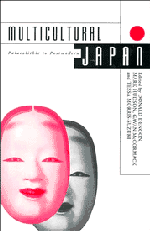Book contents
- Frontmatter
- Contents
- List of Figures and Tables
- List of Contributors
- Abbreviations
- Introduction
- Part 1 Archaeology and Identity
- Part 2 Centre and Periphery
- Part 3 Contact with the Outside
- Part 4 The Japanese Family
- Part 5 Culture and Ideology
- 14 Emperor, Race, and Commoners
- 15 Two Interpretations of Japanese Culture
- 16 Kokusaika: impediments in Japan's deep structure
- Afterword: Diversity and Identity in the Twenty-First Century
- Index
16 - Kokusaika: impediments in Japan's deep structure
Published online by Cambridge University Press: 05 November 2011
- Frontmatter
- Contents
- List of Figures and Tables
- List of Contributors
- Abbreviations
- Introduction
- Part 1 Archaeology and Identity
- Part 2 Centre and Periphery
- Part 3 Contact with the Outside
- Part 4 The Japanese Family
- Part 5 Culture and Ideology
- 14 Emperor, Race, and Commoners
- 15 Two Interpretations of Japanese Culture
- 16 Kokusaika: impediments in Japan's deep structure
- Afterword: Diversity and Identity in the Twenty-First Century
- Index
Summary
The collapse of the Cold War removed the mask of assumed Communist (and anti-Communist) entities from states and societies around the world. As the bipolar hegemonic system broke down, component countries could turn sideways to face their neighbours. The quest for identity flared with renewed force, and attention turned to who people were and how they differed from their neighbours. It precipitated a search for identity.
Since all identity is imagined construct, the quest for ‘true’ identity was vain from the start, and often led into layers of atavistic fantasy about the nature of racial, ethnic or cultural orders, in which the simple, pure and holistic was preferred to the complex or the real. The politics of identity became a common theme across much of Europe, Latin America and the Middle East. Walls may have fallen in 1989 but others quickly replaced them, setting new tracers of division and subdivision along ethnic, linguistic and religious lines across continents and countries, even as the voracious market threatens to swallow all in its undiscriminating maw.
The process is at work in Japan with peculiar force because Japan is the favoured child and beneficiary of the Cold War, and also because deep-rooted historical questions have never been resolved, and because the long-term goals of the modern Japanese state – wealth, power, and equality of status with the West – having been achieved, the achievement was experienced as hollow. Where was Japan to go from there?
- Type
- Chapter
- Information
- Multicultural JapanPalaeolithic to Postmodern, pp. 265 - 286Publisher: Cambridge University PressPrint publication year: 1996
- 5
- Cited by



